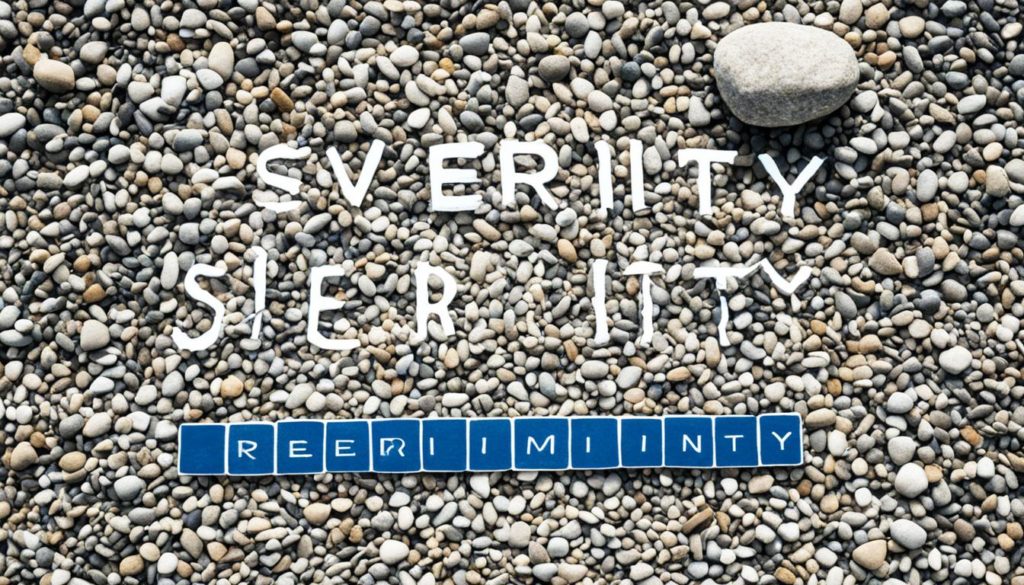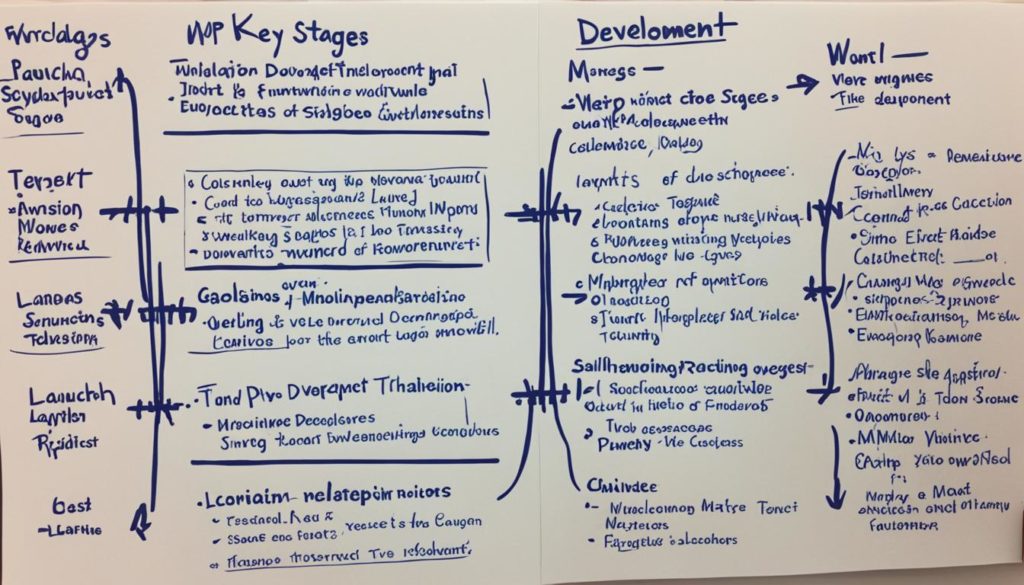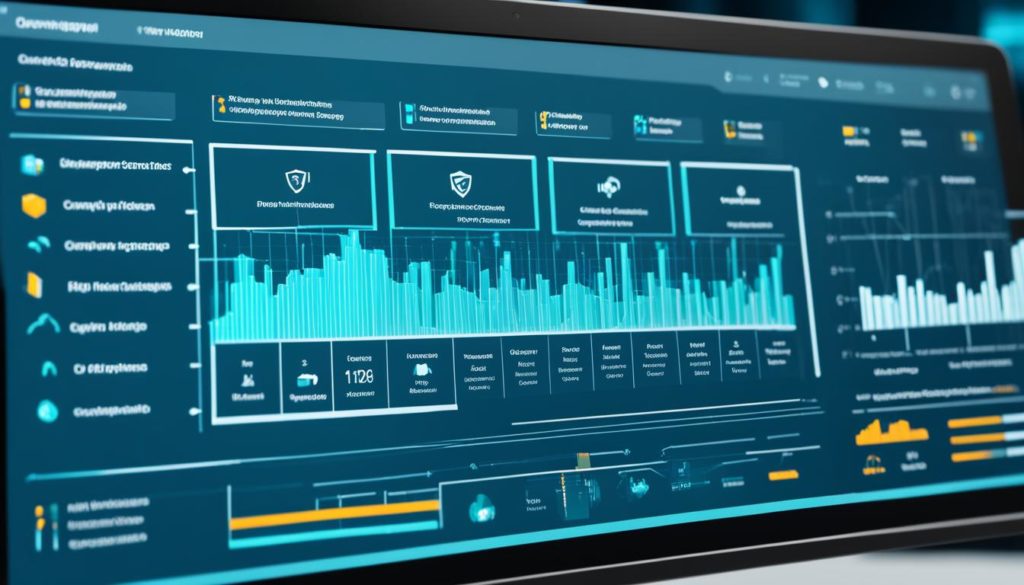
Did you know many top tech startups started with a Minimum Viable Product (MVP)? For example, Airbnb, now worth over $100 billion, began with a simple website to test the market. This MVP concept has changed how companies develop and test new products.
In the agile methodology and Lean Startup world, MVP is key. By focusing on basic features, companies can get real feedback early. This ensures their final product meets market needs. It saves time, resources, and lowers the risk of failure.
The MVP helps us learn what customers want with little effort. It aligns with agile methodology. We’ll see how it fits into Lean Startup and its benefits for tech startups and businesses.
For a deeper look, check out this great resource on Minimum Viable Product.
Key Takeaways
- An MVP focuses on the essential features to test a product idea early.
- It’s a crucial component of agile methodology and the Lean Startup approach.
- The MVP helps in gathering maximum validated learning with minimal effort.
- By validating concepts with real users, companies save time and resources.
- Examples like Airbnb highlight the effectiveness of starting with an MVP.
- The MVP approach significantly reduces the risk of product failure in business and tech.
Introduction to Minimum Viable Product (MVP)
The idea of Minimum Viable Product (MVP) is key in business and tech today. It comes from the Lean Startup approach. An MVP is a basic product with few features to get feedback from users. This way, teams learn what customers want with less effort, lowering risks and saving resources.
What is MVP: Definition and Concept
So, what is MVP? It’s a basic version of a new product with just the essential features. These features draw in early users and validate the product idea through feedback. By making the product simple, teams can quickly improve it based on what users say, keeping up with market needs.
The Origin and Evolution of MVP
The MVP started with Eric Ries and his book “The Lean Startup.” Ries showed how to learn about customers with less waste. Now, MVP is used by teams in many industries to quickly find out what users need. It has grown to include strategic goals, user research, and competitive analysis for better products.
How MVP Fits into the Lean Startup Methodology
The Lean Startup focuses on quick tests, learning from feedback, and improving in cycles. MVP is key here by testing product ideas with real users. By getting feedback early, startups can adjust their plans and avoid failure. This way, each update is based on real data, making products more adaptable and responsive.
Benefits of MVP in Business and Technology
The Minimum Viable Product (MVP) method is known for its efficiency and strategic benefits. It offers early market validation, cost savings, customer feedback, and quick market entry.
Early Market Validation
The MVP method gives early market validation. By starting with a basic product, companies can check demand and see if it fits. This step is key to making the product better and increasing its success chances.
Cost Efficiency and Risk Reduction
One big plus of the MVP is its cost efficiency. It focuses on the most important parts first, saving money and avoiding bad investments. This way, companies save money and reduce risks, fitting well with the Lean Startup benefits.
Customer Feedback and Iteration
Getting customer feedback fast is crucial with an MVP. Companies learn what users like and need early, making the product better. This feedback loop makes sure the final product meets the market’s needs, improving its fit.
Speed to Market
In today’s fast tech world, being quick to market is key. The MVP method lets companies enter faster by focusing on the basics first. This quick start helps grab early customers and gives a competitive edge, showing the full value of MVP.
What is MVP in Business?
The concept of a Minimum Viable Product (MVP) is key for new startup development or business strategy. An MVP is a basic product that introduces a new idea to the market. It lets companies test their ideas with low risk and investment.
Looking at MVP examples, like Airbnb and Amazon, shows how they started with simple ideas. They then grew based on what users liked and needed. This way, they made sure their products matched the market well, guiding future changes.
The MVP process is more than just a way to launch a product. It’s a business philosophy that helps companies move fast and smart. For example, Amazon started as a website selling books. By focusing on what users wanted and using their feedback, Amazon grew into a huge e-commerce company.
Many successful companies have used the MVP approach. This method lets a startup use its resources to get real feedback from the market. It helps validate ideas and make sure they meet market needs. In short, MVP is about learning a lot while spending less.
Here’s a quick look at how MVP has helped different businesses succeed:
| Company | Initial MVP | Current Status |
|---|---|---|
| Amazon | Online bookstore | Global e-commerce leader |
| Airbnb | Simple website for renting air mattresses | Worldwide accommodation platform |
| Spotify | Music streaming service with limited library | Leading music streaming app |
By using MVP in our business plans, we can hit big goals with a smart, step-by-step approach. This method helps us find the market fit faster and ensures lasting success.
Steps to Build a Successful MVP
Building an MVP the right way makes sure our product meets our goals and user needs. We structure our process to create an MVP prototype that gives us valuable insights. These insights help us turn the MVP into a full product through ongoing changes and feedback from users.
Aligning MVP with Business Objectives
First, we align the MVP with our business goals. This makes sure our development supports our strategic plans. By setting clear goals, we focus on adding features that give real value to our users and stakeholders.
Identifying Core Features and User Issues
Next, we pinpoint the key features and solve user problems. We use user story mapping to pick out the most important parts that fix big user issues. This way, we focus on the main features that make a big difference.
Creating and Testing the MVP Prototype
Once we know what features to include, we make the MVP prototype. It should work well and give users a full experience. After making it, testing the MVP is key to check if it’s feasible and easy to use. Thorough testing makes sure the MVP does what it’s supposed to and adds real value to users.
Iterating Based on Feedback
After launching the MVP prototype, we start getting feedback. This feedback helps us make changes and improve the product based on how people use it. This cycle of making changes is crucial to get the MVP ready for a wider release.
| Step | Description | Key Activities |
|---|---|---|
| Align with Business Objectives | Ensuring the MVP supports strategic goals | Define product objectives |
| Identify Core Features | Focus on essential functionalities | User story mapping |
| Create MVP Prototype | Develop a basic version of the product | MVP testing |
| Iterate Based on Feedback | Refine the product with user input | Continuous improvement and iteration |
Conclusion
Using the Minimum Viable Product (MVP) idea is a smart way for both new and existing businesses to innovate. It means making a basic product that meets the main needs of early users. This strategy fits well with the Lean Startup approach.
This method helps us test our business ideas, get important customer feedback, and make changes based on what we learn. Companies like Amazon and Dropbox started small and grew big by listening to their users and always improving. This way, we can quickly change to meet the market and what customers want, which helps us succeed.
The MVP is not just a method; it’s a way of thinking that makes us agile and resilient. By adding key features and listening to users early on, we can plan for a successful business. With an MVP, we launch products quicker and build stronger bonds with our customers. This sets us up for lasting growth and new ideas.
FAQ
What is an MVP?
An MVP, or Minimum Viable Product, is a basic version of a product. It has just enough features to draw in early users and check if the product idea works.
How does an MVP fit into the Lean Startup methodology?
The Lean Startup method, created by Eric Ries, includes MVP as a key idea. It’s about testing and improving products with user feedback. This way, you learn a lot about customers quickly and efficiently.
What are the benefits of building an MVP?
Building an MVP has many advantages. It helps validate the market early, saves money, lowers risks, gets products to market faster, and gathers important customer feedback for future improvements.
Can you provide some examples of successful MVPs?
Absolutely! Airbnb and Amazon are great examples. They started with simple ideas and grew by listening to what users wanted and needed.
What steps are involved in building a successful MVP?
To make a successful MVP, first align the product with your business goals. Then, figure out the key features and what users need. Next, build and test the MVP, and use feedback to improve it.
Why is customer feedback important in the MVP process?
Customer feedback is key in the MVP process. It confirms your ideas, shapes future updates, and makes sure the product meets market needs. This cycle of feedback is vital for making the MVP better.
How does an MVP help in reducing costs and risks?
An MVP cuts costs and risks by testing the product early. This way, you avoid wasting time and resources on ideas that might not work in the market.
What role does MVP play in Agile methodology?
In Agile, MVP is crucial. It lets teams test and improve products with user input. This keeps the development flexible and in tune with market changes.
How does creating an MVP help with speed to market?
Making an MVP speeds up getting products to market. It simplifies the development process. This lets businesses quickly introduce products and start getting feedback for further enhancements.
What strategic goals should be considered when building an MVP?
When making an MVP, focus on strategic goals like fitting the market, solving user problems, and aligning with business objectives. This ensures the MVP lays a strong foundation for future growth.
Future App Studios is an award-winning software development & outsourcing company. Our team of experts is ready to craft the solution your company needs.










